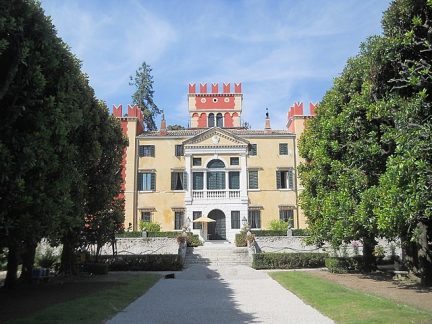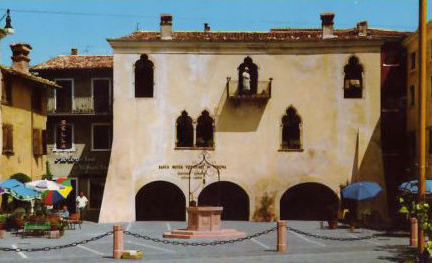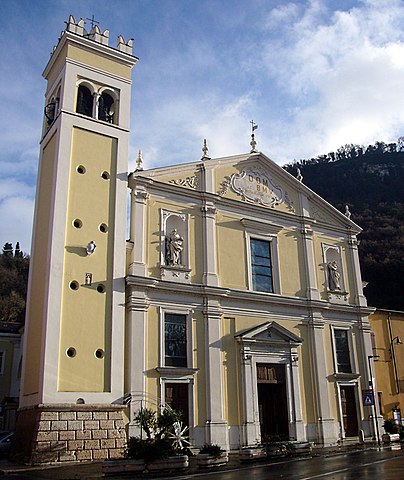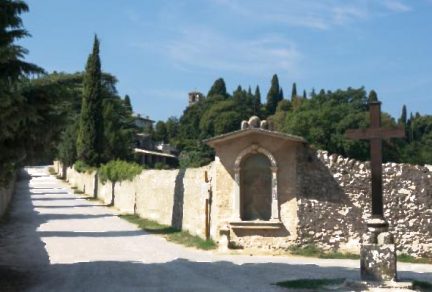Garda (town)
Garda is the oldest town on the Lake Garda and one of the most popular destinations for Italians and foreigners alike. At its heart, Garda was a fishing town and although today tourism is the main activity, fishing traditions are not lost, anyone can see this in the harbour that is filled with fishermen’s boats that go out to fish in the early morning.
Garda lies on the South Eastern shore of the lake and is the first town that you would think of when considering a holiday on Lake Garda.
Garda is a great place to use as a base to visit any of the other towns on Lake Garda including the cable car to Malcesine and the ferry service to all the other small towns. Garda isn’t far from Gardaland, Movieland, Aqua Paradise Park, Sirmione and Verona and complimentary buses run every day during the summer season.
One of the main attraction of Garda is the lakeside promenade. Although it is not as long as that at Salò, it is much wider and also free of cars. This is where the heart of the Garda town lies with its hotels, ice cream shops, bars and cafes which spill out onto the pavement with waiters rushing across the street armed with their plates of Italian fare for customer sitting at the lakeside.
Garda is alive with boats and ferries arriving and leaving and renting a boat can be a wonderful experience to taste the ambiance and the water borne excitement. After all this is the home of Riva!
The lakeside area is very flat and it is very popular with walkers and cyclists. Garda has a beach which is used for sunbathing. Its not a tropical white sand beach of course but the water is very clear and the views of the nearby mountains are fantastic.
The nightlife in Garda is also quite interesting as Garda is not a sleepy village as many other settlements along the lake are. There is a nightclub, named Papillon but Garda, like many other Italian towns transforms itself into a nighttime heaven of late nigh cuisine, conversation and good wines, supported by soft multi-colored lighting along the promenade with bands playing most summer nights
Garda is also good for shopping too as there are some artisanal shops, fashion outlets and art galleries in the street.
Attractions in Garda
Some of the most important landmarks of Garda are:
Villa Albertini

The villa, which sits on the road to San Vigilio, was built during the second half of the 16th century by the Becelli family, the feudal lords of Costermano originally from Verona. One of its attractions is the huge park that stretches across the hill with towers, a Belvedere, chapels, cloisters, greenhouses, paths and fountains. The San Carlo chapel is found nearby. On August 10, 1848, in the villa which is now owned by the Albertini counts, King Carlo Alberto, victorious in the war against the Austrians, received the Lombard delegation, which brought him the act of annexation of the Piedmont Region.
The Captains Palace

The ancient palace built in Venetian Gothic style was given this name because it was the home of the Captain of the lake, the magistrate representing the Republic of Venice in Garda whose duties were to ensure security and prevent smuggling. It may have been the first home of the Carlotti family, feudal lords of Verona, who bought it from the S. Colombano Priory of Bardolino.
Garda Parish Church

The 15th century cloister with its beautiful loggia, the vicarial house and a few fragments of inscriptions in Gothic lettering, friezes, memorial tablets and parts of a Carolingian ciborium are all that remain of the original parish church which belonged to Ospedale Maggiore of Brescia. The present structure dates back to the 16th century, and the bell tower was built in 1571. The church roof was later raised, a vaulted ceiling was installed in the central nave and altars were built along the aisles. At the back of the church is a chapel for war victims dedicated to the Madonna of Peace. The church contains a 15th century fresco of the Madonna and Child. The confessionals were built by the school of the celebrated cabinet-maker named Brustolon of Belluno. The church also has a Papal bull of Innocent II (1138) engraved in marble near the bell tower door, a 16th century wooden crucifix, and an altar piece of S. Biagio that is attributed to Palma il Giovane.
Camaldolensian Hermitage
(Eremo di San Giorgio)

Situated on Mount S. Giorgio, which is also known as the Friars’ Rock, the monastery sits on a hill (309 m) further inland from another one on which an old fort once stood. It is easier to reach the monastery from Bardolino than from Garda, as the path leading up to the Hermitage is very steep.